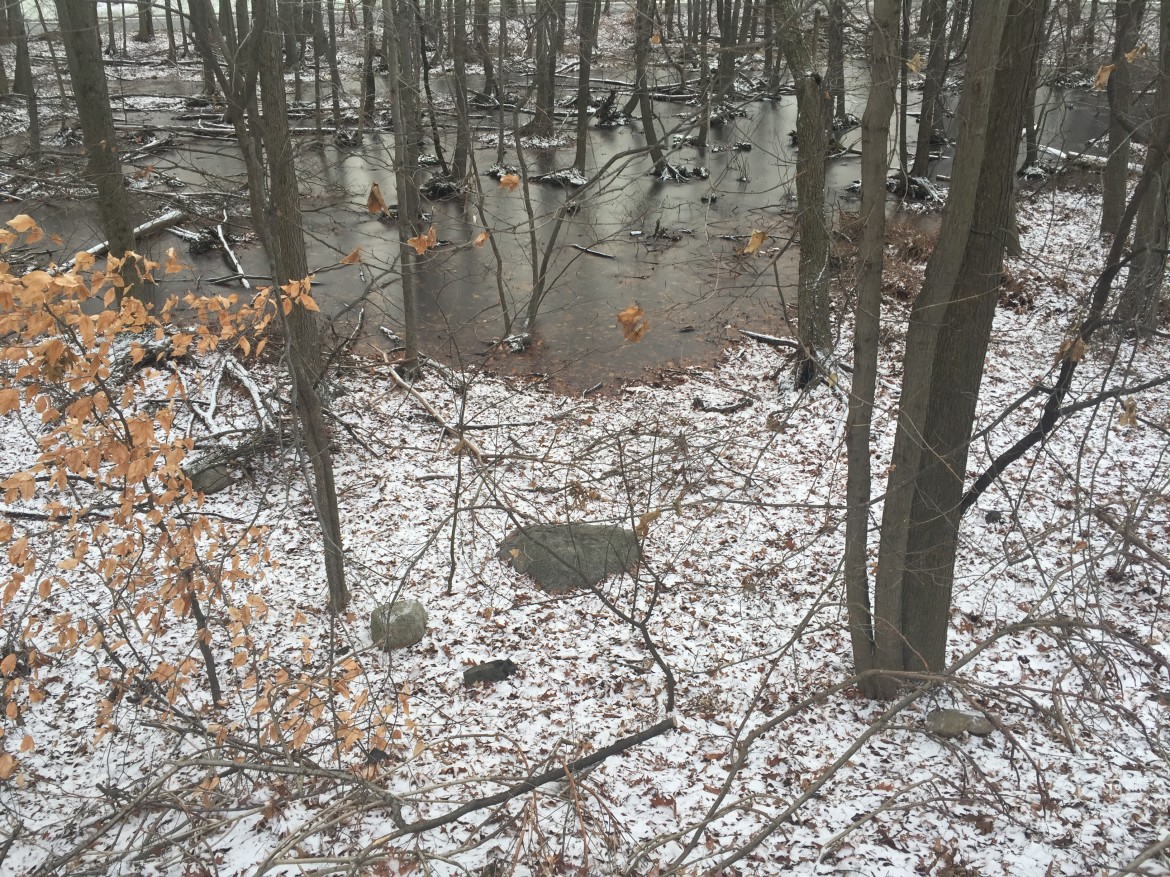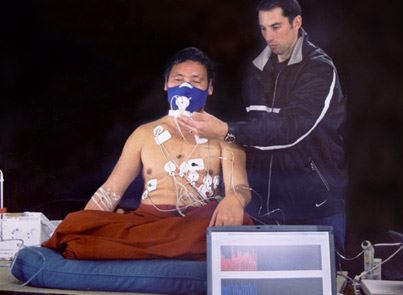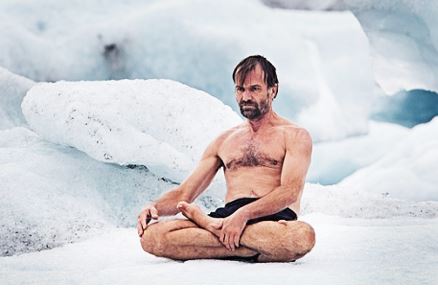Beat the Freezing Cold With Meditation!
Befriend the cold

Zenpra 17th February 2015 2 Comments
With record breaking snowfall this year I am trying every way to stay warm. The brutal cold reminded me of a video I saw of monks being able to heat their bodies and actually cause a cold wet blanket to steam. I have not been able to use meditation to handle this unprecedented cold so I decided to explore how other people have managed to do so. The research shows that monks practicing Tummo meditation can actually increase their core body temperature and their peripheral skin temperature. I also came across a guy name Wim Hof who is able to plunge into freezing cold water and holds 20 Guinness World Records for being able to put himself through brutally cold situations. He does this by using a specific breathing and meditation technique that he has developed while facing the extreme cold. It is crazy to see what these guys can do and how they push past limitations. I will also share with you my experience using mediation to handle the cold.
Tummo meditation

Tummo meditation is also known as inner heat meditation. It is practiced by monks who live in the frigid Himalayas. Their goal is to be able to control their bodily processes through meditation. They demonstrate this by being able to withstand freezing conditions. There extraordinary feats have peaked the interest of scientist wanting to know how do they raise their body temperature. It has been scientifically proven that they can consciously increase their core body temperature up by 1.3 degrees Celsius. The scientists have found that they are able to achieve this feat by mental concentration and somatic muscle control. The monks practice for decades different breathing , visualizations, and meditation techniques. One type of breathing technique that helps them withstand the cold is called Vase breathing. It involves breathing into the abdomen and then not releasing all of the air from the belly before taking another breath. After taking in a deep breath the monks hold the breath in and contract both abdominal and pelvic muscles. This isometric contraction of the abdominal region makes the stomach look round resembling the base of a vase. Just imagine when you expand your belly when you inhale and that is what vase breathing looks like.
The second part of Tummo mediation is visualization and concentration. A certain type of visualization involves focusing on a mental image of flames along the spinal cord. They concentrate on imagining the inner heat that their body is creating. The effects of visualization can be detected using EEG. The EEG data showed that during visualization there is a dominance of Alpha wave production.The scientists have hypothesized that this increase in alpha production inhibits their ability to perceive cold. I myself could not think of warm thoughts and still stand the 9 degree weather outside.
They are not doing this just to show off, instead they are doing this to reach a deeper state of meditation. They are improving their ability to inwardly concentrate and focus.
You can read the published study here. There is also an older study done by Dr.Benson from the Harvard gazette .
Wim Hof aka The Iceman

Wim Hof is a bad ass who jumps into freezing cold lakes and runs marathons in the winter with barely an anything on. Just looking at what this guy can do makes me feel cold. He holds 20 Guinness World Records for putting himself through brutal weather conditions. Here he is swimming in an ice cold lake! It is crazy what this guy can do in the cold, I was intrigued on how he accomplishes this. He claims that anyone can do it. Tests have been done on him showing he has an increased immunity and he is able to raise his core body temperature.
The Wim Hof method consist of a breathing technique to help combat the cold. This is similar to the Pranayama practice kapalbhati. kapalbhati is also rightfully known as fire breath. Maybe this can help me beat the cold.
- Power breathes- Forcefully exhale using your diaphragm. Inhale naturally. You want to exhale longer than you inhale. Repeat this breathing cycle for 30 cycles. He says it is similar to blowing up a balloon.
- Breathe in and out fully. The next step is to breathe out fully and slowly. Once you finished exhaling point your chin downward and hold it there to prevent you from inhaling. After 15 seconds remove the hold and inhale deeply. Once you cannot inhale anymore hold the air in your lungs for 15 seconds. After the time is up exhale normally. Continue this cycle only one or two times when you are first starting off.
- Finish with a body scan– After you are done with your breathing exercise perform a 5 minute body scan. Try to witness how your body feels and the heat that has been generated.
He claims that anyone can do what he does by learning this specific breathing method. ( I don’t know anyone who would be willing to actually subject themselves to this much cold!) He says that let cold be your teacher and your body will adapt and learn how to cope with it. There is a fascinating book
My own experience
I noticed that when I face cold situations I tend to take a deep breath and hold it. It is a natural response almost like shivering. I find it interesting that it is similar to the Tummo meditation and the Wim Hof style of breathing to keep your abdominal muscles contracted in isometric tension. It seems like that the monks were able to understand the body’s natural response and find out how to consciously control it to increase their core body temperature. However, I am no way as daring as Wim Hof to actually subject myself to brutally cold conditions. It has not worked for me and I assume that you need years of practice to accomplish this physical feat.
What I have noticed is that I like to be mindful of the cold. The sensation of cold can be a gateway to meditation. I have found a useful meditation to use whenever you find yourself in the cold. This meditation might not warm you up but it can help you explore your body and be mindful of different sensations in your body.
- Find a cold place either outside or in your house
- Just stand in the cold and observe how your body feels. Don’t control your body, let yourself shiver if you feel like it.
- Notice any involuntary movements in your body. Observe your thoughts and where your attention is.
- Slowly take deep breathes and try to calm your body down. Focus your attention on your body.
- Witness how the cold penetrates different parts of your body differently. Be observant of how your hands and extremities feel compared to your core.
- Run into the house and find a warm place it is cold!
Remember if it gets uncomfortable stop immediately, you do not want to hurt yourself. This type of mindfulness is useful if you find yourself in a cold situation like waiting for the bus.
Our bodies are very powerful and we are just beginning to understand all the possibility of what it can do. It just shows you how dedication and practice can help you overcome perceived limitations. I have not had success yet with using meditation to battle this cold weather, if anyone has I would love to hear your experience.
I feel that we can be distracted by all of these meditation “tricks”. The goal of meditation is not to be able to perform these superhuman feats. It might cause people to obsess over trying to achieve these feats and miss the simplicity of meditation. However, it is inspiring to see what is humanly possible and how people are able to push their limits and achieve extraordinary feats. So if this article is making you feel cold just by reading it, don’t worry, just find a warm place in your house and start meditating. However, if you are willing to explore possibilities of your body test out cold meditation. Remember just don’t try anything to dumb or crazy when exploring the cold.
